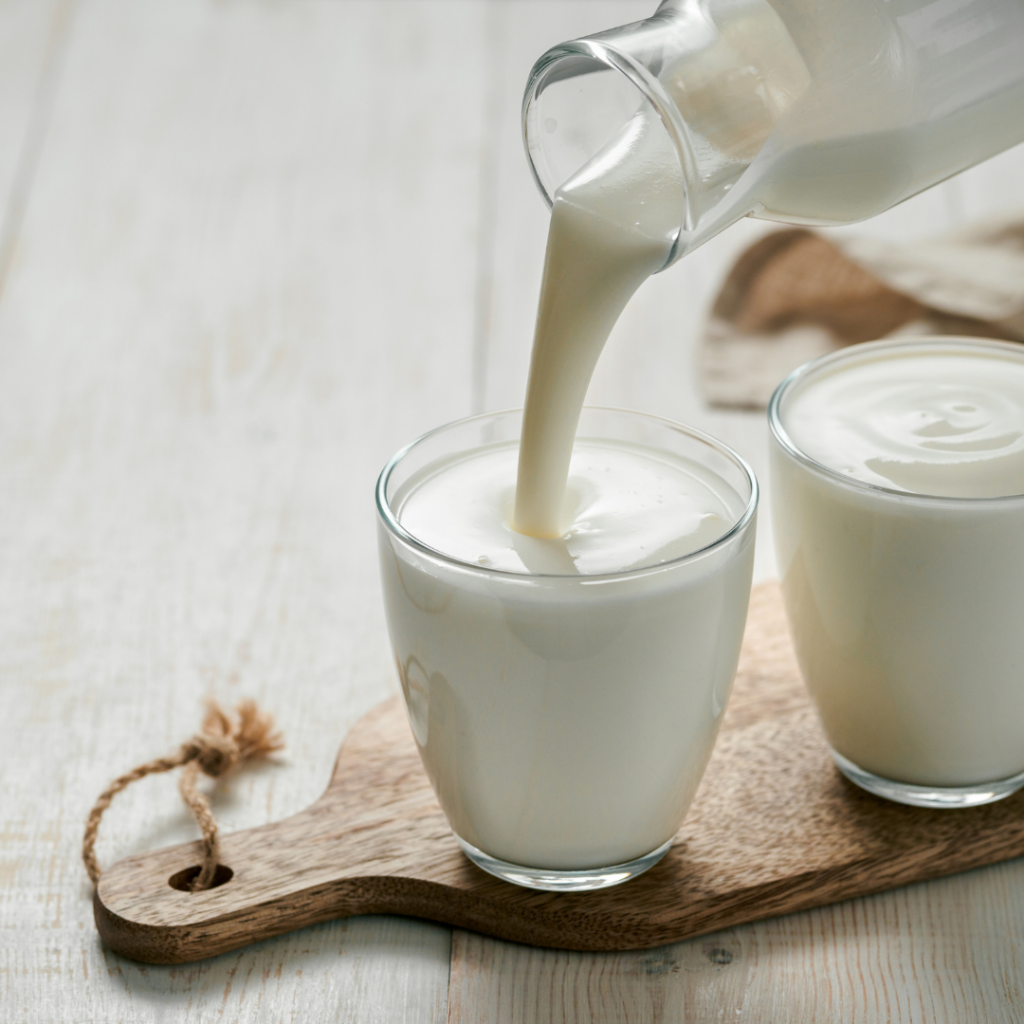Contrary to what many people think, making yogurt is easy, and you don’t have to break the bank to make it. Store-bought yoghurt can be expensive, especially when it combines multiple ingredients and flavours. The homemade version promises to be healthier and even more versatile for just a fraction of the cost of its store-bought counterparts.
By using high-quality milk and controlling the amount of sugar and additives, you can make for yourself a yummy snack packed with probiotics and nutrients. The best part? Making homemade yoghurt is surprisingly simple! With just a few basic ingredients and some essential equipment, you can enjoy a fresh cup of homemade yoghurt.
Here’s how to make yoghurt at home.

Ingredients
- Half a gallon of 2% milk, preferably whole milk
- Half a cup of plain yogurt with active culture or yogurt starter
- Fruits, diced (optional)
These ingredients make 8 servings of Yogurt.
Instructions
- Heat the milk in a pot until it begins to boil, stirring it occasionally to prevent curdling. Allow it to simmer over low heat for some minutes before leaving it to cool.
- You can run a heat test by dipping your pinky–of course, after washing your hands–into the milk. If you can withstand the heat for about ten seconds, then the milk will be ready for the next step. If not, wait a little longer. Alternatively, you can use a thermometer to check if it is cool enough (about 110°F or 43°C)
- Add your yogurt starter or plain yogurt to the milk and cover with a pot, first with its lid and then with a blanket around it. Another option is to use the Euro Cuisine YM80 Yogurt Maker, which incubates your yogurt mix to always produce perfectly made yogurt.
- Place the pot in a warm place and leave the mixture incubated for six to eight hours. Afterwards, transfer it to the fridge to thicken. Once it is set, strain the yoghurt through a cheesecloth.
- Serve with berries or fruits.

Storage and shelf life
Store your yoghurt in a container with a tight-fitting lid to elongate its shelf life. Also, clean spoons should be used to scoop from the yoghurt and refrigerate it at 40°F (4°C) or below to slow down bacterial growth and spoilage.
When refrigerated, homemade yoghurt can last up to 2 weeks, but it only lasts two hours without refrigeration.
Health benefits of homemade yoghurt
Because of the high amount of healthy microbes in yogurt–which can be as much as thirty times more in homemade yogurt–your digestive health is supported. These bacteria keep your gut healthy by fighting off harmful bacteria that may grow excessively.
It is also a good dietary source of many necessary nutrients.

Tips and troubleshooting
If you cannot use whole milk, skimmed milk is a good replacement for the recipe. Almond and coconut milk also work.
- Adding sweeteners is not necessary. But if you must, do this only after the yoghurt is set and chilled to prevent the growth of unwanted bacteria.
- You can give your yoghurt some flavour with vanilla, fruits, or minty leaves.
- If your yoghurt is too runny, add more yoghurt starters and incubate it for a longer period. Add more milk if it is too thick.
- To ensure your yogurt sets, make sure your incubation temperature is right. This is typically between 104 and 113°F (40 to 45°C).
- Mold in your yoghurt means some harmful bacteria have been grown. If you notice this, discard it immediately.
Conclusion
You’re nourishing your body and delighting your tastebuds with every spoonful of your homemade yoghurt. Embrace the thrill of this experimentation and explore new flavours while at it. Happy yoghurt-making, and may the culture be with you!











